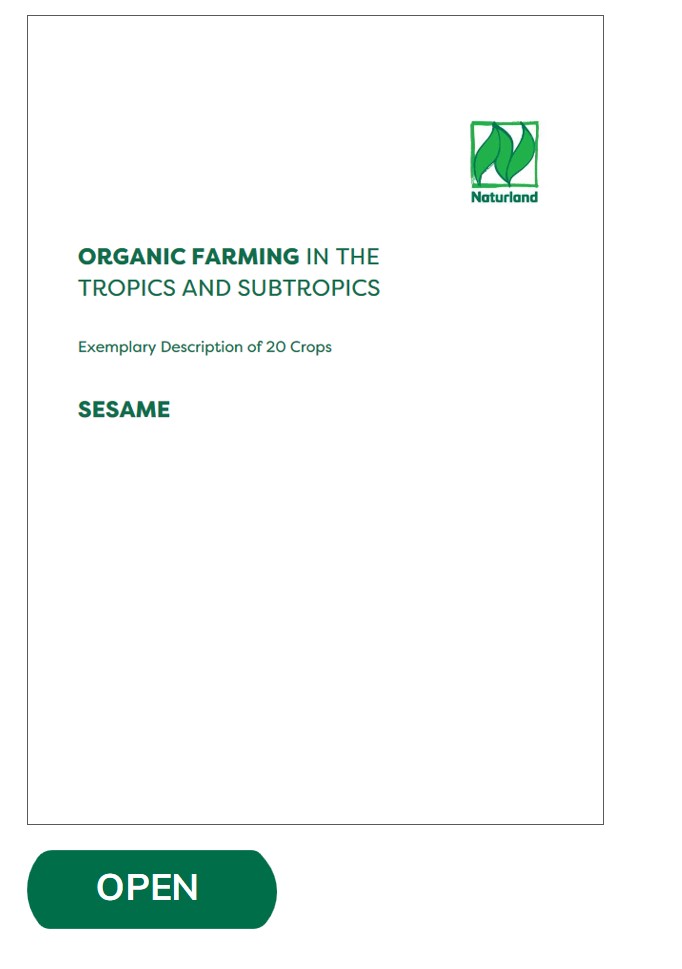Sesame - Cultivation Guidelines
 Sesame e sesame um indicum L. (S. orientale L.) belongs to the double-cotyledon pedaliaceae family. It is an annual plant, which grows either bush-like or upright, depending on variety, to a height of 1-2 m. Its vegetation period is generally around 3-4 months. The oil plant has been grown since the beginning of arable cultivation and originates from the dry bush savannah of tropical Africa, and spread from there to India and China, where it is still widely cultivated. The sturdy taproots, which attain a depth of around 1 m, and the plat's dense network of fibrous roots - which are interwoven with mycorrhiza fungi acting in symbiosis - provide a plentiful supply of nutrients and water. The square stem can either have many brances or none at all - sepending on the variety. Usually, only the middle of the three flowers that form in the leaf axils develop to form between 4 and 10 capsules. The ripe, dry capsules open up to reveal their seeds, nestling along the inner walls, so that they may be carried away by the wind. One thousand corns wigh (TCW) between 2.5-3.5 g. The seeds can be either white, yellow, red, brown, or black. The vegetation period is only 80-130 days short. The blossoming and ripening phases take place over several weeks, starting at the bottom of the plant and progressing upwards.
Sesame e sesame um indicum L. (S. orientale L.) belongs to the double-cotyledon pedaliaceae family. It is an annual plant, which grows either bush-like or upright, depending on variety, to a height of 1-2 m. Its vegetation period is generally around 3-4 months. The oil plant has been grown since the beginning of arable cultivation and originates from the dry bush savannah of tropical Africa, and spread from there to India and China, where it is still widely cultivated. The sturdy taproots, which attain a depth of around 1 m, and the plat's dense network of fibrous roots - which are interwoven with mycorrhiza fungi acting in symbiosis - provide a plentiful supply of nutrients and water. The square stem can either have many brances or none at all - sepending on the variety. Usually, only the middle of the three flowers that form in the leaf axils develop to form between 4 and 10 capsules. The ripe, dry capsules open up to reveal their seeds, nestling along the inner walls, so that they may be carried away by the wind. One thousand corns wigh (TCW) between 2.5-3.5 g. The seeds can be either white, yellow, red, brown, or black. The vegetation period is only 80-130 days short. The blossoming and ripening phases take place over several weeks, starting at the bottom of the plant and progressing upwards.
This cultivation guide will provide input on aspects of plant cultivation, as well as product specifications of organic sesame.
